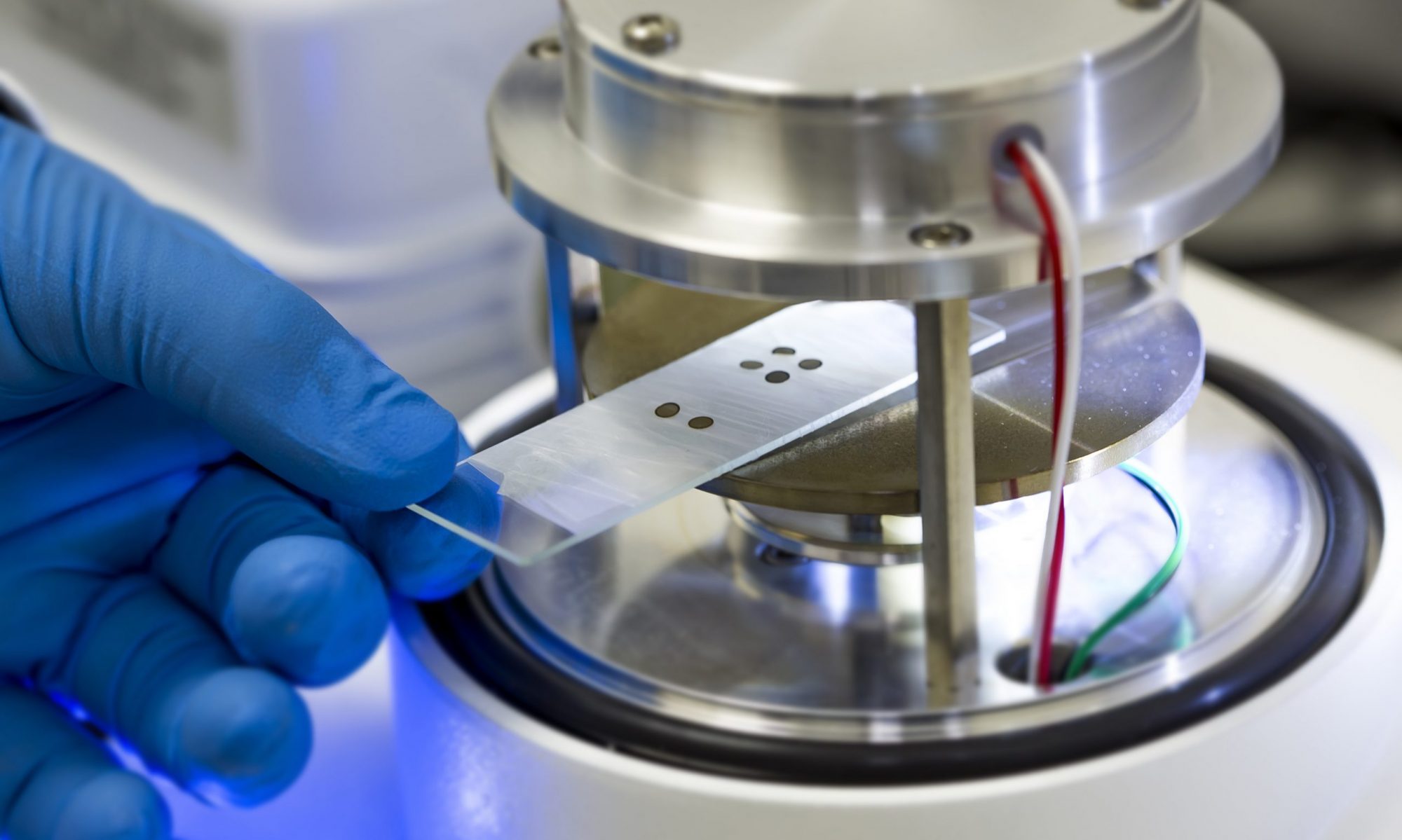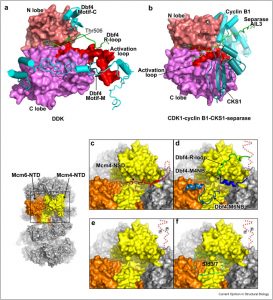DNA replication initiation in eukaryotes is tightly regulated through two cell-cycle specific processes, replication licensing to install inactive minichromosome maintenance (MCM) double-hexamers (DH) on origins in early G1 phase and origin firing to assemble and activate Cdc45-Mcm2-7-GINS (CMG) helicases upon S phase entry. Two kinases, cyclin-dependent kinase (CDK) and Dbf4-dependent kinase (DDK), are responsible for driving the association of replication factors with the MCM-DH to form CMG helicases for origin melting and DNA unwinding and eventually replisomes for bi-directional DNA synthesis. In recent years, cryo-electron microscopy studies have generated a collection of structural snapshots for the stepwise assembly and remodeling of the replication initiation machineries, creating a framework for understanding the regulation of this fundamental process at a molecular level. Very recent progress is the structural characterization of the elusive MCM-DH-DDK complex, which provides insights into mechanisms of kinase activation, substrate recognition and selection, as well as molecular role of DDK-mediated MCM-DH phosphorylation in helicase activation.
Citation: Ningning Li, Ning Gao, Yuanliang Zhai, DDK promotes DNA replication initiation: Mechanistic and structural insights, Current Opinion in Structural Biology, Volume 78,2023,102504, https://doi.org/10.1016/j.sbi.2022.102504.

